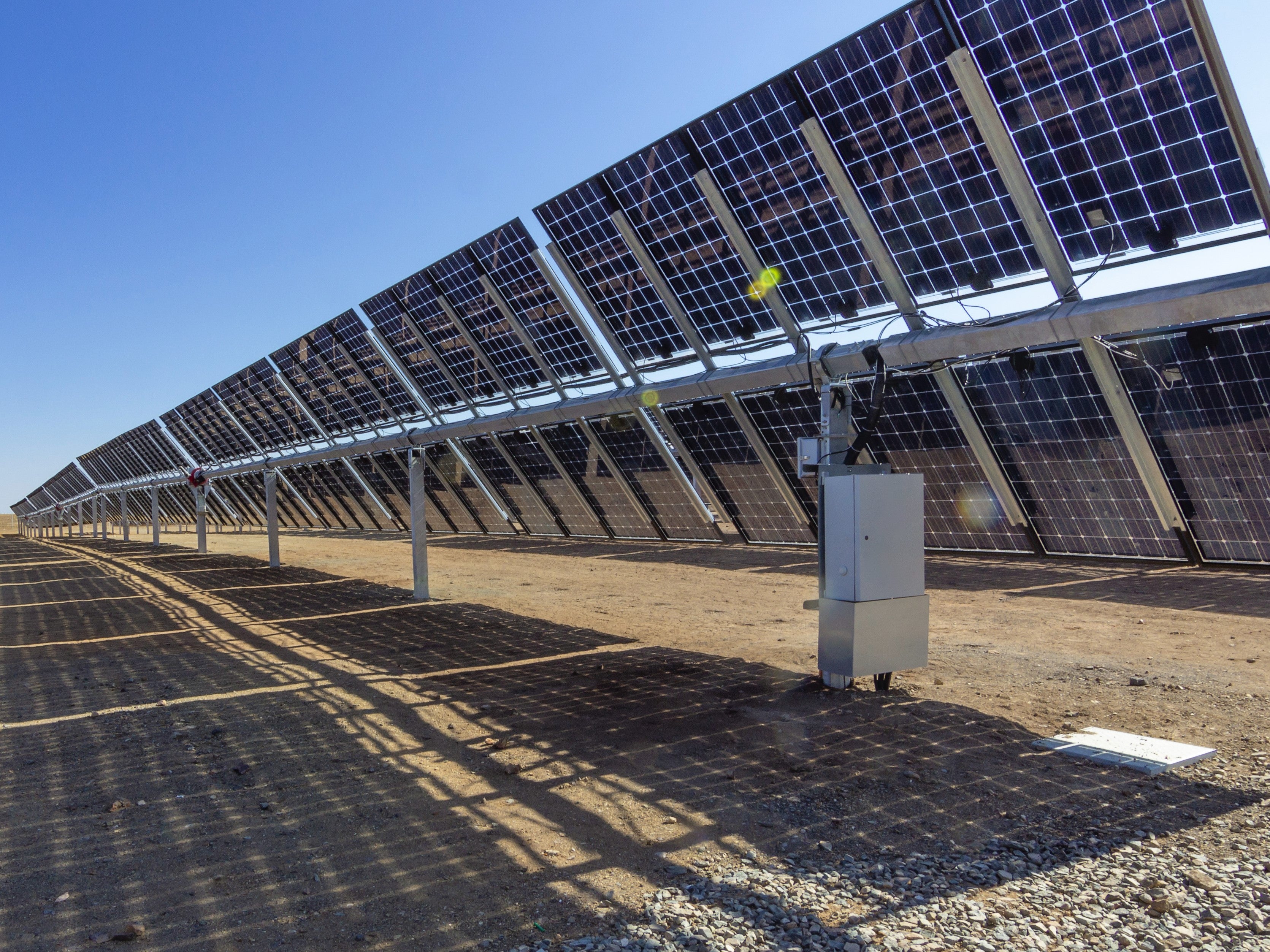Double-sided solar panel breakthrough offers big boost for net-zero targets
Bifacial photovoltaics are projected to contribute over 16 per cent of the global energy supply by 2050

Scientists have figured out a new method for improving double-sided solar panels that could help make them a viable long-term renewable energy source.
Bifacial solar panels are able to generate up to 35 per cent more electricity than conventional one-sided solar panels, as they are able to collect light on both sides.
As well as being able to harvest reflected light, double-sided panels are also more durable than traditional panels and are able to produce power for over 30 years.
This improved efficiency and durability mean they are expected to provide over 16 per cent of global energy demand by 2050, though until now it has been difficult to precisely measure the energy produced by bifacial photovoltaics.
A team of researchers from the University of Ottawa came up with a method to improve the measurement of bifacial panels by considering external effects of ground cover like snow, grass and sand.
Benefits of the method include allowing comparisons between existing and emerging bifacial technologies, enhancing performance through specific design optimisations, and increasing solar panel deployments to non-traditional markets.
“This method is of particular importance as renewable energy penetration increases towards a net-zero world, with bifacial photovoltaics projected to contribute over 16 per cent of the global energy supply by 2050, or around 30,000 TWh annually,” said Professor Karin Hinzer, founder of SUNLAB.
“This will extend current International Electrochemical Commission standards for bifacial solar panel measurements, enabling accurate comparisons of bifacial panel technologies, application-specific optimisation, and the standardisation of bifacial panel power ratings.”
Previous studies have also found that the implementation of double-sided solar panels could also significantly reduce the cost of electricity.
A paper detailing the latest research, titled ‘A general illumination method to predict bifacial photovoltaic system performance’, was published in the scientific journal Joule on Wednesday.
Join our commenting forum
Join thought-provoking conversations, follow other Independent readers and see their replies
Comments


Bookmark popover
Removed from bookmarks